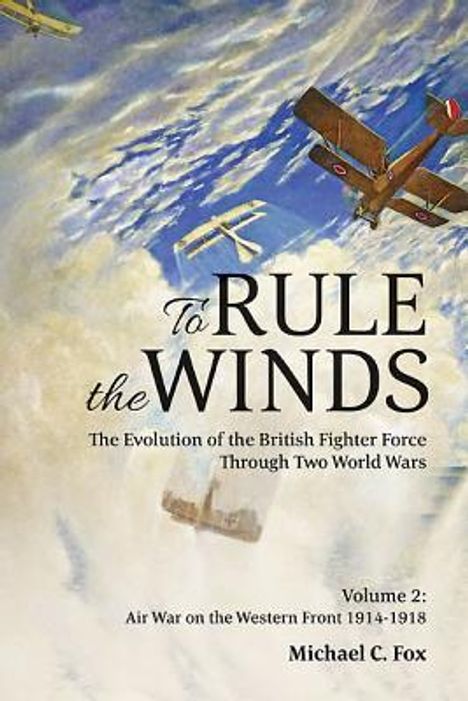Michael C Fox: To Rule the Winds: The Evolution of the British Fighter Force Through Two World Wars, Gebunden
To Rule the Winds: The Evolution of the British Fighter Force Through Two World Wars
Buch
- Volume 2 - Air War on the Western Front 1914-1918
Erscheint bald
Lassen Sie sich über unseren eCourier benachrichtigen, sobald das Produkt bestellt werden kann.
Lassen Sie sich über unseren eCourier benachrichtigen, sobald das Produkt bestellt werden kann.
- Verlag:
- Helion & Company, 06/2026
- Einband:
- Gebunden
- Sprache:
- Englisch
- ISBN-13:
- 9781909982260
- Umfang:
- 432 Seiten
- Gewicht:
- 949 g
- Maße:
- 234 x 156 mm
- Stärke:
- 41 mm
- Erscheinungstermin:
- 30.6.2026
- Hinweis
-
Achtung: Artikel ist nicht in deutscher Sprache!
Weitere Ausgaben von To Rule the Winds: The Evolution of the British Fighter Force Through Two World Wars |
Preis |
|---|
Ähnliche Artikel
Michael C Fox
To Rule the Winds: The Evolution of the British Fighter Force Through Two World Wars
Buch
Aktueller Preis: EUR 65,29
Przemyslaw Skulski,
Fiat G.55 Centauro - Orange Series
Buch
Aktueller Preis: EUR 27,41
Walter Isaacson
The Greatest Sentence Ever Written
Buch
Aktueller Preis: EUR 19,43





